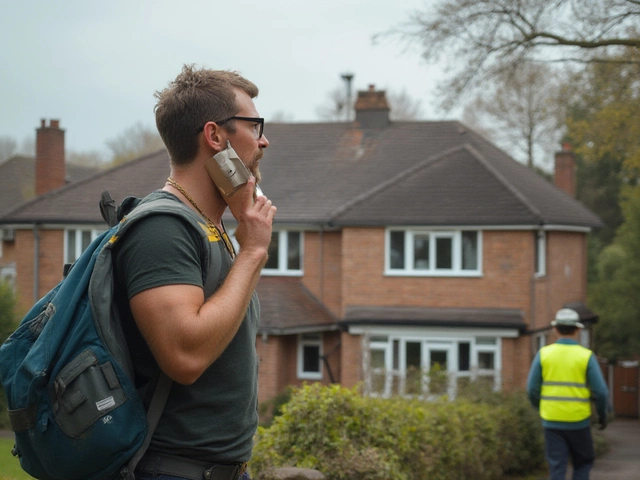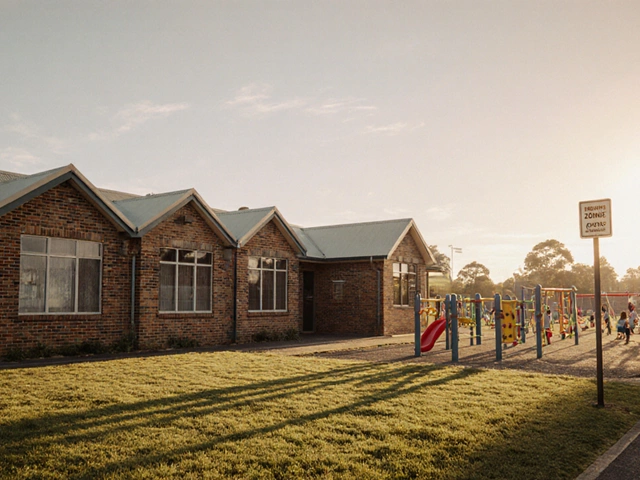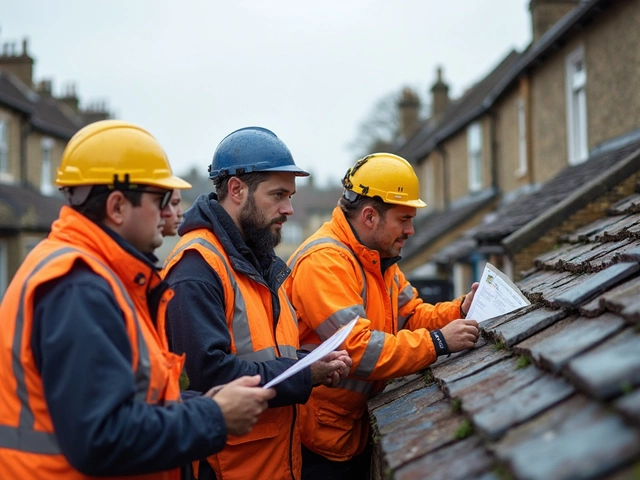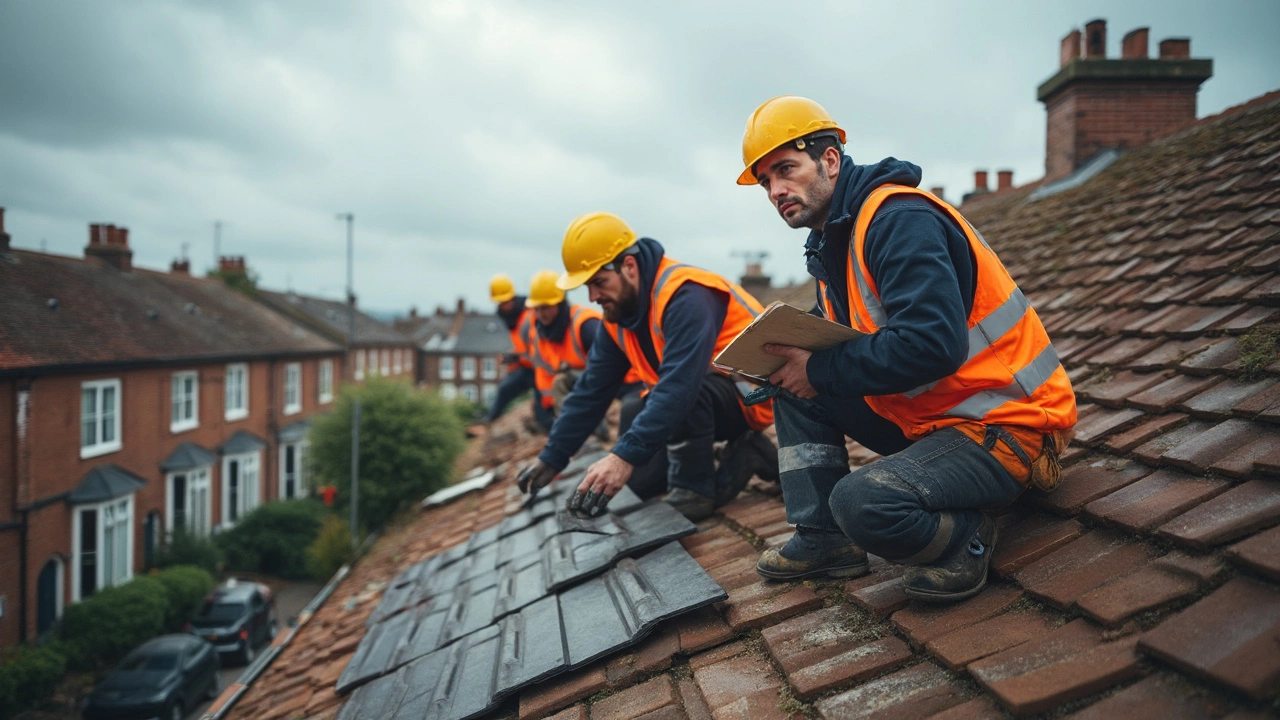
Ever stared up at a crew fixing a roof and wondered what those workers are actually called? You're not alone—it's one of those things most folks never think about until they're hiring someone to patch up a leak or replace shingles blown off by last night's storm. Most people just say "roofers," but there are more specific titles floating around the job site.
Knowing the real names and roles can help when you're calling contractors or talking about price quotes. You'd be surprised how many specialties fall under roofing, from the person nailing shingles to the one making sure each layer is watertight. If you're trying to get the best job done on your own house, learning who does what can make all the difference.
- Common Titles for Roof Workers
- Different Roles on a Roofing Crew
- Training and Certification
- Safety and Daily Challenges
- Tips for Hiring Roofing Pros
Common Titles for Roof Workers
Most people just call them roofers, but the titles actually tell you a lot about what each worker brings to the table. The main one is, of course, "roofer"—that’s the broad term for someone who installs, repairs, or replaces roofs on homes and other buildings. But if you get into the details, there’s a bit more to it.
On big job sites, you’ll often hear the term "roofing laborer." These are the folks doing most of the heavy lifting and carrying, hauling materials, removing old shingles, and cleaning up as the crew goes along. Usually, they’re newer to the trade, learning as they work. Then you’ve got "roofing mechanics" or "journeyman roofers." These guys know their stuff—they’ve got a few years of experience and usually handle the technical parts like laying out underlayment or making sure shingles or tiles go on right.
There’s also the "foreman." He’s the one who runs the crew on the ground, making sure the job gets done safely and on time. If you’re working with a larger company, there may even be a "roofing superintendent," who supervises multiple crews at once. For specialized systems, like metal or flat roofs, you might run into titles like "sheet metal workers" or "single-ply roof technicians."
Want to see what the pros say? Check out this quote:
“Not all roofers are the same. You’ve got helpers, foremen, and specialized techs. Knowing who you need saves you money and trouble.” — National Roofing Contractors Association
If you’re calling around for estimates, drop these titles into your questions. You’ll look like you know your stuff, and it might even get you better answers or prices.
Different Roles on a Roofing Crew
Here's where it gets interesting: a roofing crew usually isn’t just a group of people all doing the same job. On any typical job site, you’ll see a lineup of different roles, each with specific skills and responsibilities. The bigger or trickier the project, the more specialized some of these roles get.
Let’s break down a standard crew:
- Roofer or Installer – This is the one most people picture: laying down shingles, tiles, or metal panels. They make sure everything is watertight and secure.
- Foreman or Crew Leader – Think of this person as the coach. They keep things on track, answer questions from homeowners, and double-check everyone’s work.
- Laborer or Tear-Off Specialist – They handle most of the heavy lifting, hauling old roofing debris and materials up and down ladders. Some call them the "muscle" of the team.
- Sheet Metal Worker – When your roof has details like flashing, chimneys, or custom metalwork, this pro handles it. They work with metal to shape and install the tough parts that stop leaks.
- Flashing Installer – Sometimes the flashing around chimneys, vents, or skylights is done by a specialist, especially on bigger sites or commercial jobs.
A 2023 Roofing Industry survey found that in most professional companies, you’ll see at least three distinct roles on the crew, with larger projects including up to seven different titles. That’s because tasks get divvied up for speed, safety, and expertise. Here’s a quick look at some stats on crew size and specialization:
| Crew Size | Average # of Roles | Specialized Positions Included |
|---|---|---|
| 3-4 | 3 | Roof Installer, Laborer, Foreman |
| 5-6 | 4-5 | + Sheet Metal Worker, Flashing Installer |
| 7+ | 5+ | + Specialist, Safety Inspector |
Skilled roofers often cross-train, but almost every crew has a go-to person for metalwork and a leader who watches out for safety and quality. As one long-time roofing foreman, Mike Ellis, said,
"Having the right person in each role doesn’t just make the job faster, it keeps mistakes and accidents way down. You never want your laborer guessing how to do flashing in the rain."
If you ever watch a roof get replaced, notice how coordinated it is. Each person moves with purpose, often handling materials or tools only they’re best at. That’s not just for show – it’s how quality jobs get done and how they stay on schedule, even when the weather isn’t playing nice.

Training and Certification
If you thought anybody with a ladder and hammer could call themselves a roofer, think again. Proper training is a big deal in the roofing world, especially when you want a job done right and safe. Most roof workers start out as helpers, learning on the job with an experienced crew. Some companies prefer to hire folks who have already completed an apprenticeship, which usually lasts about 2 to 4 years. During this time, newbies pick up everything from materials and safety rules to good installation techniques.
In the U.S., roofers don’t always need a special license everywhere, but many states and cities do require one to legally work on roofs. For example, California and Florida have strict licensing rules. Workers usually need to pass an exam that covers building codes and safety. It’s a good sign if your roofing crew can show you proof they’re licensed and insured.
Beyond regular on-the-job training, there are certification programs. The National Roofing Contractors Association (NRCA) is one of the biggest names in the field. They offer courses and certificates for pros who want to stay sharp or specialize in certain types of roofs, like metal or low-slope (flat) roofs. Some popular certifications include:
- NRCA ProCertification, which covers installers, foremen, and repair specialists
- Manufacturers’ certifications (like GAF or CertainTeed), often needed for extended warranty jobs
- OSHA 10 or OSHA 30 construction safety cards, which are huge for anyone working at heights
If you’re hiring, make sure your roofing service team can show at least some of these. Proper training means fewer mistakes and less risk to your house and the people fixing it.
| Certification | Who Needs It | Purpose |
|---|---|---|
| OSHA 10/30-hour Card | All roofers | Jobsite safety, fall prevention |
| State Roofer License | Varies (by state) | Legal compliance |
| NRCA ProCertification | Installers, foremen, repair pros | Skill verification |
| Manufacturer Certification (e.g. GAF Master Elite) | Lead installers | Extended warranty eligibility |
The bottom line: not every roofer has the same training. The best ones never stop learning, because new roofing products and rules pop up all the time. If you want the job done right, certifications matter.
Safety and Daily Challenges
Working as a roofer isn’t just another job in the trades. It’s tough and risky—even a quick search brings up scary stats. The U.S. Bureau of Labor Statistics reports that roofers have one of the highest rates of work injuries and fatalities in construction. You’re often dealing with steep slopes, unpredictable weather, and the constant fear of slipping. Some crews start at sunrise to avoid the worst heat, because roofing in the middle of summer can literally cook you. Hydration and breaks are the only way to keep going when the shingles are hot enough to fry an egg.
Fall protection is a must. OSHA, the main safety watchdog, actually requires harnesses and guardrails above a certain height. Good roofers are always roped in, and a decent company won’t ask their crew to cut corners. But it’s not just about falls—lifting heavy bundles of shingles or rolls of underlayment can trash your back if you’re not careful. Eye and hearing protection are standard too, since sawdust and nail guns are part of daily life.
Weather adds a whole other level of challenge. Roofers don’t work in thunderstorms, but rain can sneak up and force a mad dash to tarp everything. Cold temps make shingles brittle and hands numb, but deadlines don’t care. Ask any crew, and you’ll hear about working through wind or carrying heavy sheets of plywood against a breeze that wants to throw you off balance. Even a simple misstep—like tripping over a hose—can mean a serious injury.
Here’s what a roofer’s safety checklist typically covers:
- Double-check harnesses for any wear and tear
- Inspect ladders and scaffolding for stability
- Wear grippy boots to cut down on slips
- Store tools so nothing rolls down the roof
- Take regular water breaks, especially in hot weather
The reality is, no two days on a roof are the same. Some jobs go quick, others drag out because of hidden rot or surprise bee nests. Respect goes both ways—most roofing pros appreciate when homeowners understand their daily risks, so don’t be shy about asking what safety measures your crew follows before they get started.
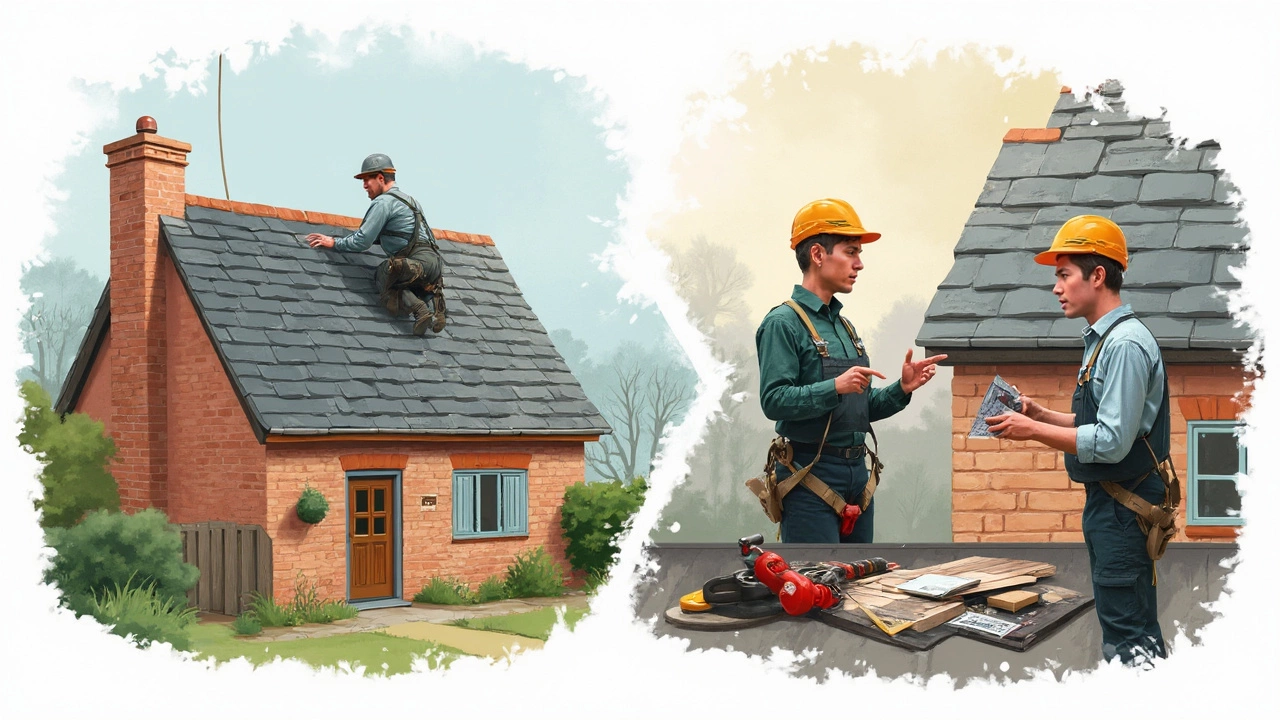
Tips for Hiring Roofing Pros
When it’s time to hire someone to fix or replace your roof, you want a crew that gets it right the first time. Not all roof workers have the same level of training, insurance, or track record, so pay attention to the details before signing anything.
- Check credentials. Ask if the company is licensed (not all states require it, but you want someone on the up-and-up) and if they carry both liability and workers’ comp insurance. This protects you from headaches if someone gets hurt on your property.
- Ask for local references. A good roofer will have jobs you can check out and clients willing to talk about their experience. If a roofing contractor can’t give at least three recent references, keep looking.
- Get a written estimate. Make sure it spells out the kind of materials, how many layers they’re removing, if there’s a warranty, timeline, and total cost. If something’s vague, ask for it in writing.
- Understand the payment plan. You should never have to pay the whole price up front. Usually, you’ll put down around 10-20% at the start, then pay in stages as work gets done.
- Read reviews—carefully. Don’t just skim star ratings. Read the comments, especially the negative ones, to spot patterns of bad communication or sloppy work.
Here’s a quick look at the average costs and payment breakdowns based on national data from 2024:
| Roofing Service | Typical Price Range | Deposit Expected |
|---|---|---|
| Basic asphalt shingle replacement | $7,000 - $12,000 | 10% - 20% |
| Metal roof installation | $18,000 - $33,000 | 10% - 25% |
| Minor repair (patch or leak fix) | $350 - $1,200 | None or small fixed fee |
It’s normal for roofers to get busy after storms, so avoid rushing into a contract. Big red flag if someone offers a super low price or only takes cash. Reliable pros will walk you through choices, give you options, and explain their warranty in plain English. That way, your roof holds up—and you sleep better at night.

